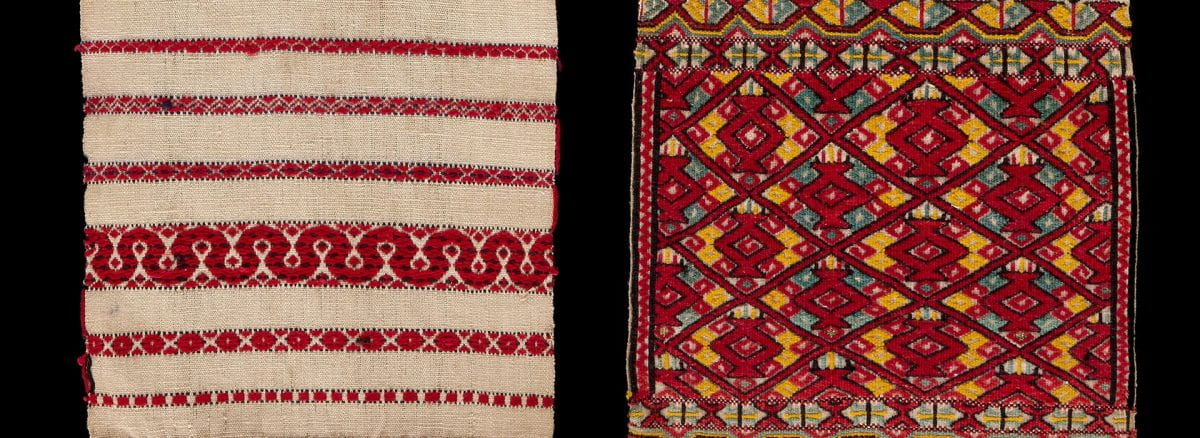Indonesians refer to the island of Borneo as “Kalimantan,” derived from a Sanskrit word meaning “burning weather island.” The island, shared politically by Indonesia, Malaysia and Brunei, is a hot and humid jungle occupied by numerous Indigenous peoples known collectively as Dayaks.
On the island and throughout Southeast Asia, the “sirat” or loincloth has historically served as an essential male garment. A fine example such as this would have been handwoven by a woman and embellished for ceremonial wear. Each regional group had a unique method of decorating the garment to easily identify the wearer.

The complex decorative ends of this sirat reflect the weaver’s talent. The panel on the right demonstrates the “songket” technique, with supplementary weft threads wrapping around warps to form an identical geometric pattern on each side of the textile. The cut warp end is overcast – sewn to prevent raveling – with braid-stitch embroidery.

The opposite panel uses a simpler technique, locally known as “pilih,” meaning to select or choose. This type of supplementary weft extends across the entire width of the cloth, using floating weft threads to form a pattern on one face and its reciprocal on the reverse. On this panel, loose warp threads have been wrapped with colored yarns that secure cotton ball tassels.
The plain, central section of the loincloth would have been wrapped around the waist numerous times and then between the legs, with the decorated panels hanging front and back from the waist. The songket panel is always positioned in the front.

